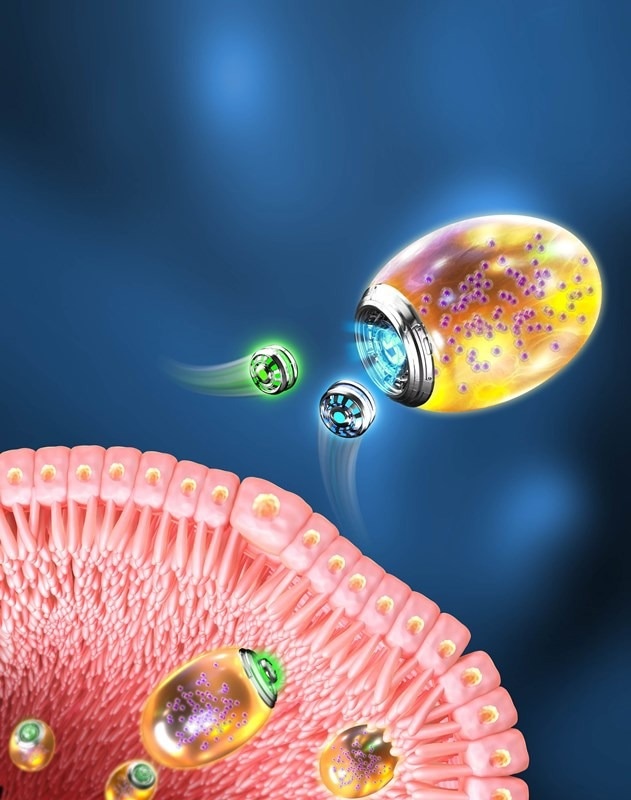A huge advancement has been made in drug delivery and therapy by micro or nanorobots with self-propelling and -navigating capabilities as a result of their controllable locomotion in inaccessible body tissues.

Yeast micro/nanorobots utilize twin-engine to self-propel in gastrointestinal intraluminal and extraluminal environments. Image Credit: Shenzhen Institute of Advanced Technology.
But coming up with self-adaptive micro or nanorobots that could adjust their driving mechanisms across several biological barriers to reach remote lesions is still a difficulty.
Recently, a research group headed by Professor Lintao Cai from the Shenzhen Institute of Advanced Technology (SIAT) of the Chinese Academy of Sciences has come up with a twin-bioengine yeast micro or nanorobot (TBY-robot).
This has self-adaptive and self-propelling abilities that have the potential to navigate autonomously to inflamed sites to offer gastrointestinal inflammation therapy through enzyme-macrophage switching (EMS).
This study was reported in the Science Advances journal on February 22nd, 2023.
The TBY-robot was built by scientists by asymmetrically immobilizing catalase and glucose oxidase onto the surface of anti-inflammatory nanoparticle-packaged yeast microcapsules.
At a homogeneous glucose concentration, the Janus distribution of enzymes could catalyze the decomposition of glucose to produce a local glucose gradient that induces TBY-robot self-propelling motion.
In the existence of an enteral glucose gradient, the oral TBY robots navigate toward the glucose gradient to penetrate the intestinal mucus barrier and further cross the intestinal epithelial barrier by microfold cell transcytosis.
We found that TBY-robots effectively penetrated the mucus barrier and notably enhanced their intestinal retention using a dual enzyme-driven engine moving toward the enteral glucose gradient.
Lintao Cai, Professor, Shenzhen Institute of Advanced Technology, Chinese Academy of Sciences
Following in situ switching to the macrophage bioengine in Peyer’s patches, the TBY robots independently migrate to inflamed sites of the gastrointestinal tract via chemokine-guided macrophage relay delivery.
Encouragingly, TBY-robots increased drug accumulation at the diseased site by approximately 1000-fold, markedly attenuating inflammation and ameliorating disease pathology in mouse models of colitis and gastric ulcers.
Lintao Cai, Professor, Shenzhen Institute of Advanced Technology, Chinese Academy of Sciences
This twin-bioengine delivery plan is known as a sequence-driven process using EMS, with Peyer’s patches as transfer stations. This process could accurately transport therapeutics through several biological barriers to deep-seated, distant disease sites.
The transport route is similar to that of the Express Mail Service, which precisely delivers parcels to a distant destination using different transportation facilities.
Lintao Cai, Professor, Shenzhen Institute of Advanced Technology, Chinese Academy of Sciences
Such self-adaptive TBY robots characterize a secure and hopeful strategy for the accurate treatment of gastrointestinal inflammation and also other inflammatory diseases.
Journal Reference
Zhang, B., et al. (2023) Twin-bioengine self-adaptive micro/nanorobots using enzyme actuation and macrophage relay for gastrointestinal inflammation therapy. Science Advances. doi.org/10.1126/sciadv.adc8978.